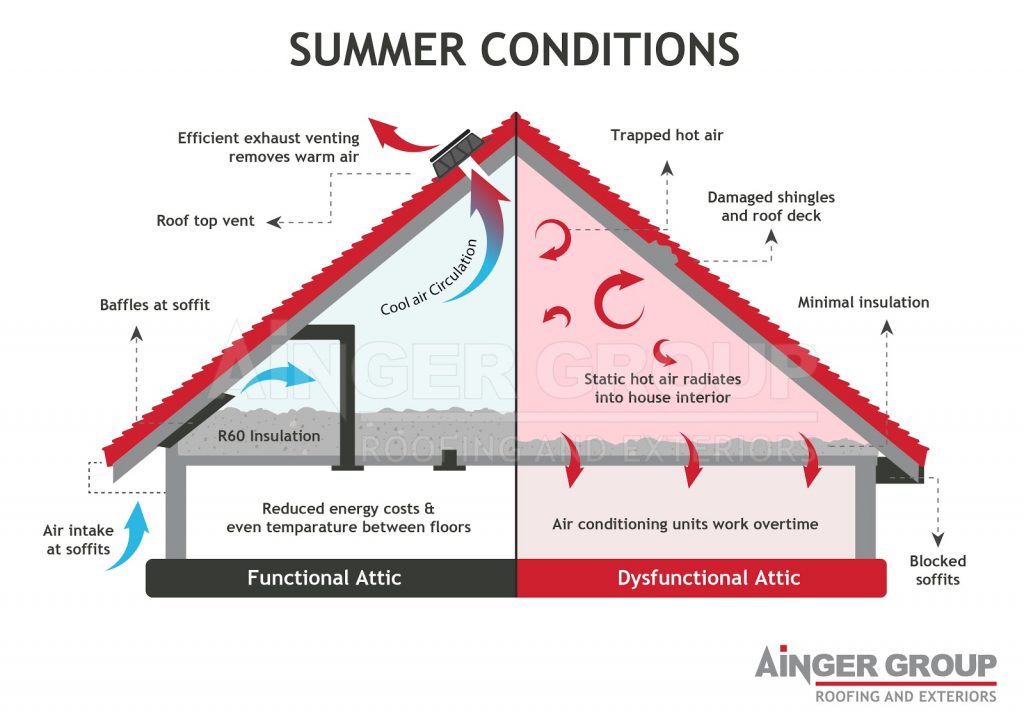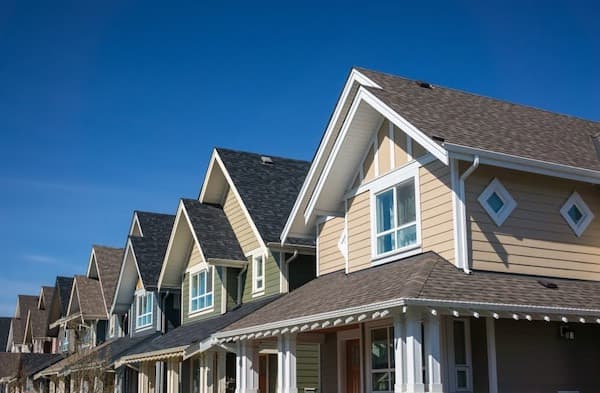Roofs are more complicated than you might think; they are not just a bunch of shingles or metal strips! They actually involve several layers and various fittings to help ensure everything connects seamlessly to form an air and watertight seal. This seal not only protects your family but also protects all the way down to your home’s foundation.
Of course, that also means there are plenty of parts of a roof that a Collingwood residential roofing company might need to repair. It’s also a good idea for homeowners to know about these problem areas, so they can keep an eye out for trouble.

Know the Seven Most Common Problem Areas on a Roof
1 – The Shingles
It might come as no shock that the outer layer of a roof is also the layer that is most prone to damage. It’s a good idea to keep an eye on your shingles, and (if possible) do a visual inspection of your roof a couple of times a year. One or two broken shingles is not a major problem, but as shingles break, it makes it more likely neighbouring tiles will break as well. Calling in a residential roofing company to fix problems early can prevent bigger issues later.
2 – Blown in Attic insulation
Insulation is installed to assist in saving you money on both air conditioning and heating costs, it can also be a benefit to protecting your personal health. Today, the industry standard is to achieve an R60 value, which is about 22.4 inches of insulation. Having the recommended proper insulation and adequate venting cuts down on possible condensation. Condensation promotes the growth of mold and mildew in your attic on the bare trusses and sheeting. Large heat loss can also melt snow on your rooftop, which then creates ice damming. All of this combined could result in your roof needing to be replaced sooner than expected.
3 – Fascia
Fascia refers to wood or metal trim that runs along the lower edge of the roof and helps connect it to the building. Fascia protects the interior/underside of the roof from damage, so any leaks in the fascia can lead to major issues in the rest of the roof.
4 – Soffit
Basically put, the soffit is the underside of the roof. In some cases, such as overhangs, it may be exposed – although most of the time, it’s hidden under the other roof components. Often, the soffit is accessible via the attic, which is likely on the other side of any insulation. This also means the soffit is vulnerable to any pests that might infest an attic, such as rats or squirrels. If they start chewing through the soffit, every other part of the roof above becomes vulnerable.
5 – Flashing
Flashings are the seals that directly bind roof components together, forming an air and watertight seal. You also see flashings around extra roof features, such as chimneys or skylights. Flashing can be damaged in storms and other violent events, so it’s a good idea to have it inspected regularly. If the flashing fails, leaks will occur.

6 – Venting
Both soffit vents and rooftop vents are installed to achieve proper airflow in your attic space. Adequate airflow helps maintain the proper seasonal attic temperature to also limit any condensation.
7 – Eavestrough
Eavestrough is installed around the perimeter of the roof edge to channel the water that falls on your roof to the proper location. Water will make its way into every nook and cranny of your home, including the foundation. With its warm day water runoffs and cool ice forming nights, springtime is notorious for creating expensive foundation repairs. The ice forming and expanding can make a hairline crack which can require a serious repair, by the time any damage or leaks are discovered, it is usually too late.
Ainger Roofing
For over 25 years, Ainger Roofing has been valued as a top-quality Collingwood roofing team, not only in the Georgian Triangle area but also across Ontario. If you have leaks this winter, or just want a general roof inspection give us a call!

